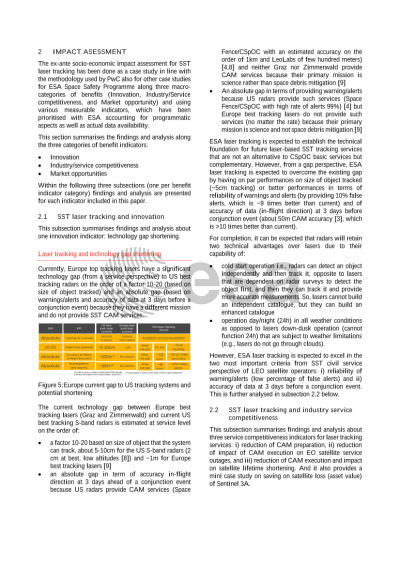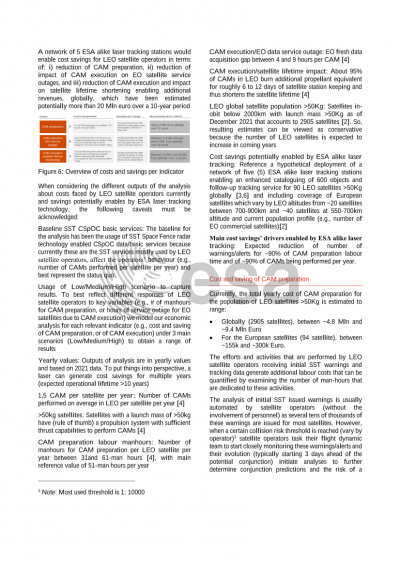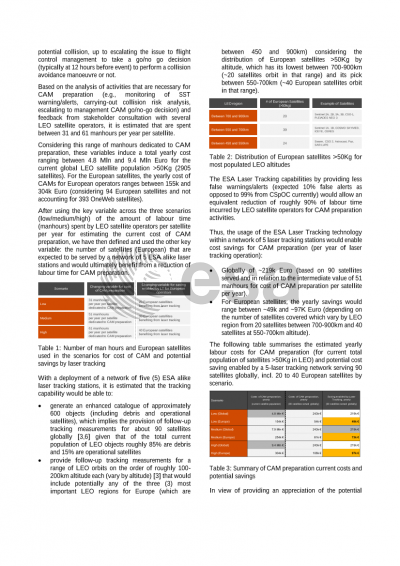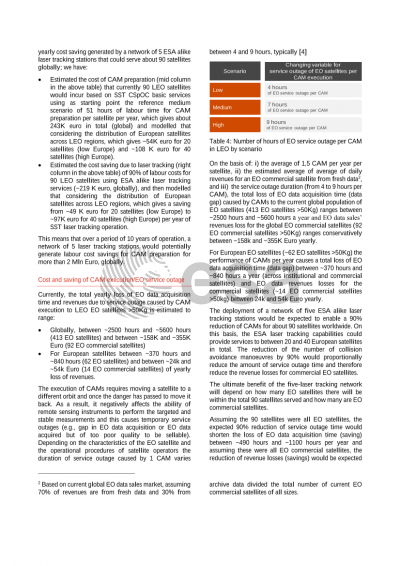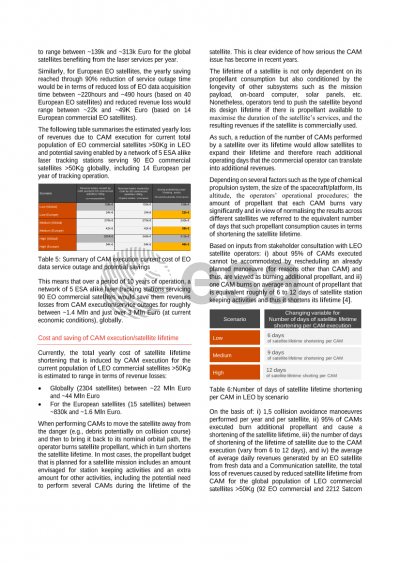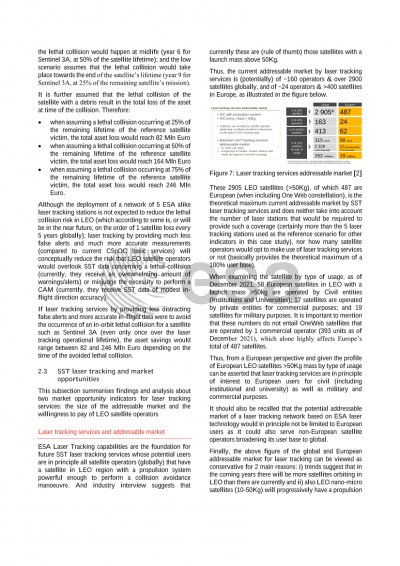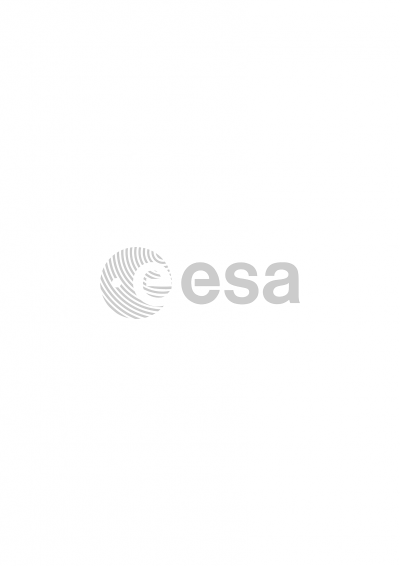Document details
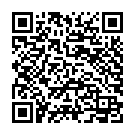
Abstract
Background
As part of a broader PwC assignment conducted for ESA in the context of ESA Space Safety Programme, the PwC team with the support of GMV carried out an ex-ante impact assessment (socio-economic analysis) of an envisaged ESA ground-based laser for testing potential future tracking services targeting LEO satellite operators.
A summary of the main results of such impact assessment of ESA SST laser tracking is proposed to be presented within the upcoming ESA NEO and Debris Detection conference.
Methodology
In line with overall study methodology, the SST laser tracking ex-ante impact assessment entailed the completion of several activities, such as:
• Definition with client of envisaged ESA SST laser program main characteristics and evolution
• Analysis of SST broad context (e.g., debris population/threats, current SST capabilities)
• Analysis of US SST benchmark radar based CSpOC basic services and emerging tracking on demand services
• Definition, of measurable indicators/KPIs along the three given benefits categories:
o Innovation (e.g., TRL increase, Tech gap shortening from a service perspective)
o Industry/service competitiveness (e.g., cost savings for LEO satellite operators)
o Market opportunities (e.g., sizing addressable LEO market and willingness to pay)
• Data gathering and stakeholder consultation (e.g., with LEO satellite operators)
• Assessment of potential benefits of a hypothetical SST laser program by indicator
Achievements
The ex-ante impact assessment of the envisaged ESA SST laser has estimated its potential benefits in terms of:
• Innovation (e.g., TRL increase, Technology gap shortening from a service perspective)
• Industry/service competitiveness (e.g., cost savings for LEO satellite operators)
• Market opportunities (e.g., addressable market and willingness to pay)
A summary of the main results is meant to be presented within the upcoming ESA conference.
Preview


